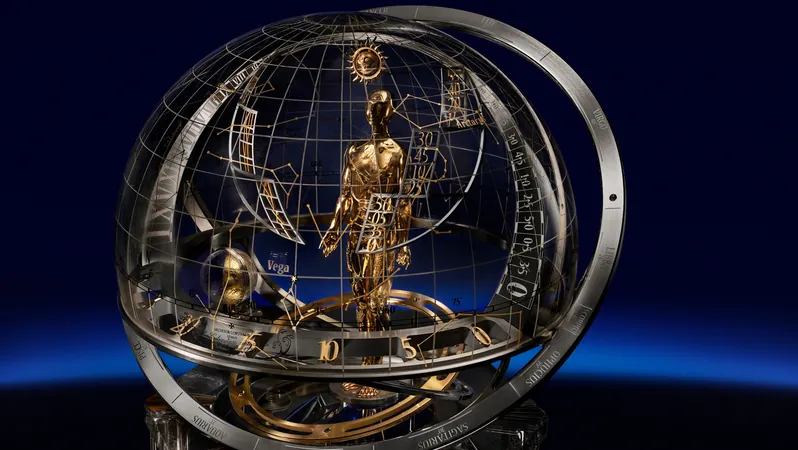
NASA’s Race Against Time: Will SpaceX’s Starship Make the 2027 Artemis III Mission?
2025-09-22
Author: Wei
NASA's Concerns Over SpaceX's Starship
NASA's Aerospace Safety Advisory Panel (ASAP) is raising alarms about SpaceX's ability to deliver a fully operational Starship for the ambitious Artemis III lunar mission scheduled for 2027. The panel has suggested that the Human Landing System (HLS) may not be ready in time, casting a shadow over NASA's plans to return humans to the Moon.
Artemis III: A Historic Mission
Artemis III is set to be a landmark event in space exploration, marking the return of astronauts to the lunar surface for the first time since Apollo. Originally slated for 2024, the timeline has now shifted to 2027, highlighting the intricacies involved in this monumental project. SpaceX’s Starship is crucial, as it serves as the vehicle to ferry astronauts from lunar orbit to the Moon’s surface.
A Chain of Delays
The timeline has already undergone significant changes: Artemis II, which will carry the first humans on an SLS rocket, is not anticipated to launch until 2026. If everything proceeds smoothly, 2027 would finally see a lunar landing. However, the risk remains. A delay in the Starship program could not only embarrass SpaceX but also jeopardize America’s chances to land on the Moon before China makes its move.
Starship’s Future in Question
Recent reports speculate that Starship might face further delays, potentially not being ready until 2032. SpaceX CEO Elon Musk has been vocal about dismissing such claims, labeling the source as unreliable. Yet, the concerns from ASAP can't be understated: while the panel admires SpaceX's progress, they recognize the scale of the challenges ahead.
Testing and Development Challenges
SpaceX has one more test flight of Starship Version 2 to complete, followed by a transition to Version 3. This testing phase is critical, as reliability must be proven before moving on to the next steps, including establishing fuel depots in Earth orbit.
The Engineering Hurdles Ahead
The HLS variant of Starship is a towering behemoth, standing between 50 and 55 meters tall, dwarfing the Apollo Lunar Module which was only about 7 meters in height. The landings will be particularly challenging, as a tilt of even a few degrees can have serious implications. Some experts humorously suggest that to mitigate these challenges, a rover the size of a JCB might be necessary to prepare a landing site, though such equipment doesn’t seem to be part of SpaceX's plans.
Lunar Spacesuits and Aggressive Timelines
Adding to the pressure are the lunar spacesuits currently being developed by Axiom Space. ASAP has described both the suit and the landing schedules as aggressive, indicating that any delay could push back the 2027 landing, regardless of whether NASA’s long-delayed SLS rocket is ready on time.
The Countdown Begins
As we inch closer to this historic moment, the eyes of the world remain fixated on SpaceX and NASA. Success hinges not only on the technological feats of the HLS but also on the delicate choreography of launching, landing, and returning safely from the Moon. The countdown has begun, and the stakes couldn't be higher.


 Brasil (PT)
Brasil (PT)
 Canada (EN)
Canada (EN)
 Chile (ES)
Chile (ES)
 Česko (CS)
Česko (CS)
 대한민국 (KO)
대한민국 (KO)
 España (ES)
España (ES)
 France (FR)
France (FR)
 Hong Kong (EN)
Hong Kong (EN)
 Italia (IT)
Italia (IT)
 日本 (JA)
日本 (JA)
 Magyarország (HU)
Magyarország (HU)
 Norge (NO)
Norge (NO)
 Polska (PL)
Polska (PL)
 Schweiz (DE)
Schweiz (DE)
 Singapore (EN)
Singapore (EN)
 Sverige (SV)
Sverige (SV)
 Suomi (FI)
Suomi (FI)
 Türkiye (TR)
Türkiye (TR)
 الإمارات العربية المتحدة (AR)
الإمارات العربية المتحدة (AR)